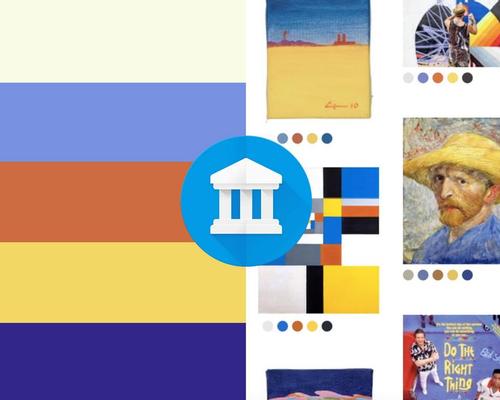13 Mar 2018
Machine learning meets culture, as Google rolls out experimental programs on Art and Culture app
BY Tom Anstey

Google has released three experimental computer programs through its arts and culture platform, each designed to explore how machine learning can enhance the public’s understanding of, and access to, art.
The three experiments include new tools offering users the opportunity to search for and discover art and photography in archives that would otherwise be “overwhelming or inaccessible”.
The first new application, called ‘Art Palette’ allows users to select several colours, with the app then generating classic and modern artworks that conform to the selected restrictions. In a promotional video, Google had designer Paul Smith try out the feature to show how it can inspire artwork.
The second experiment allows access to a broad range of American history and culture, with Life Tags offering access to LIFE magazine’s archive, which in reality fills three warehouses “stretching 6,000ft (1,800m)”.
Starting in 1936, the magazine is responsible for capturing some of the most iconic moments through the 20th century. During a near 70-year run that ended in 2000, millions of photos were taken, with only 5 per cent ever published. With the new app, 4 million of those photos are now available to look at, with the tool organising the LIFE archives into an interactive encyclopedia, where users can search by topics such as astronauts, babies making funny faces and boxing to name a few.
The last of the three experiments used machine learning to help turn the New York Museum of Modern Art’s archive of more than 30,000 photos into an interactive archive of the institution's exhibitions.
The archive while vast, didn’t detail any information about the works themselves. Using a tool built in collaboration with MoMA, 27,000 works dating back to 1929 were automatically identified and catalogued.
“Now a photo from a 1929 painting exhibition opens a window into an iconic work by Paul Cézanne; a 1965 shot of Robert Rauschenberg prints connects you to those same works in MoMA’s 2017 Rauschenberg retrospective; and one corner of a 2013 design exhibition becomes a portal into poster art across two centuries,” said MoMA.
“We unveiled our first set of experiments that used AI to aid cultural discoveries in 2016,” said Damien Henry, experiments team lead at Google Arts & Culture.
“Since then we’ve collaborated with institutions and artists, and we hope that these experimental applications will not only lead you to explore something new, but also shape our conversations around the future of technology, its potential as an aid for discovery and creativity.”
Close Window